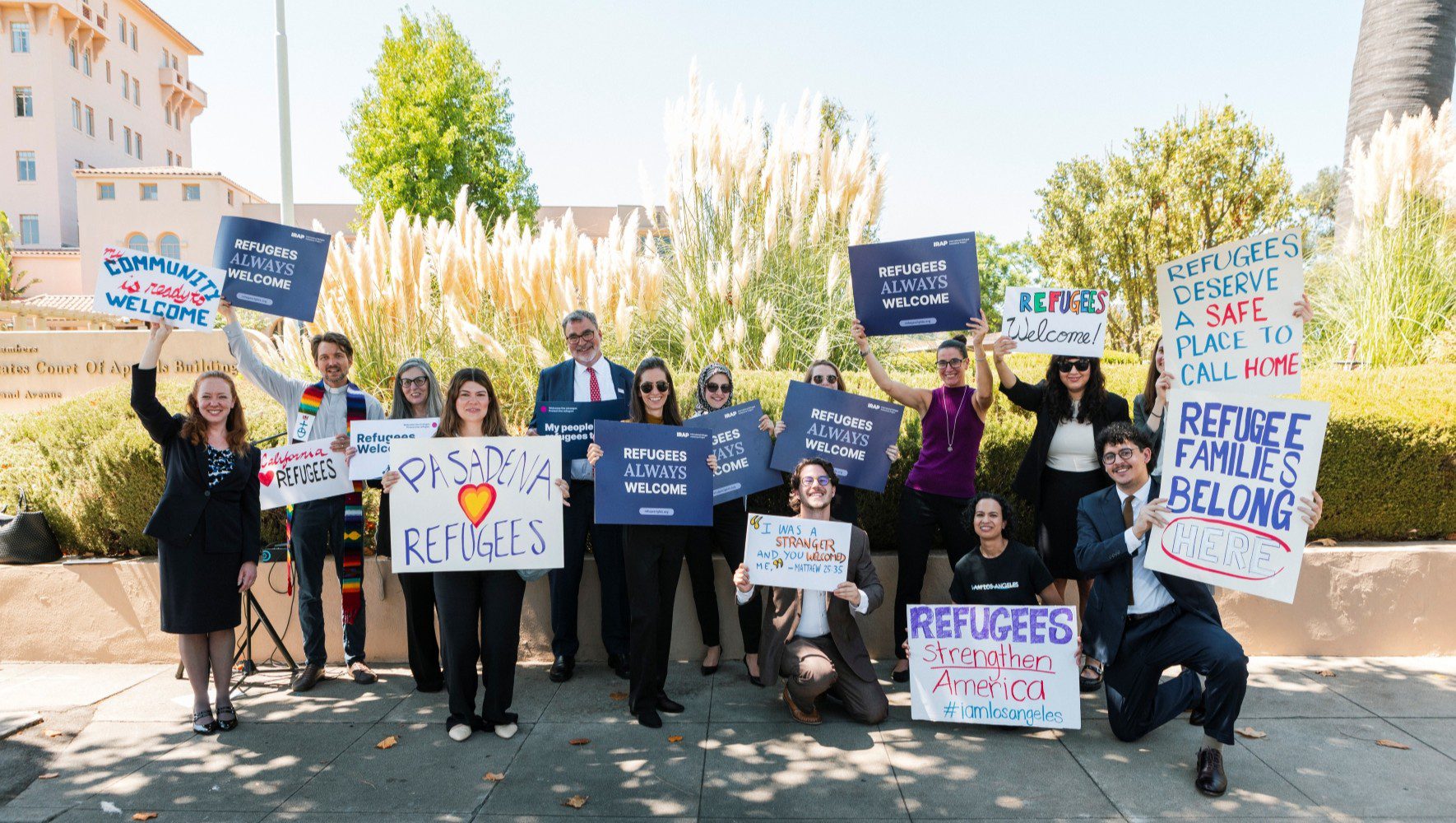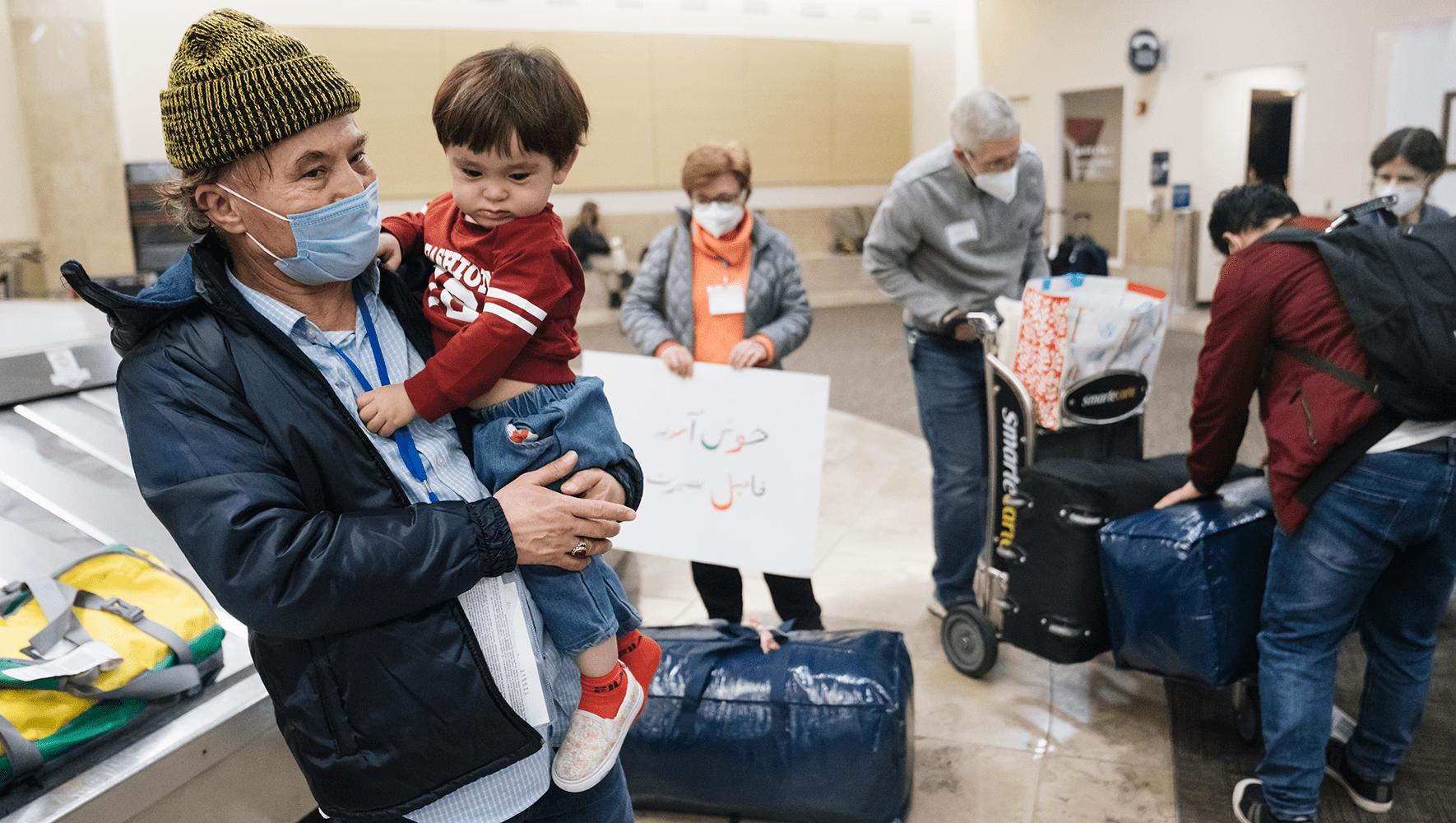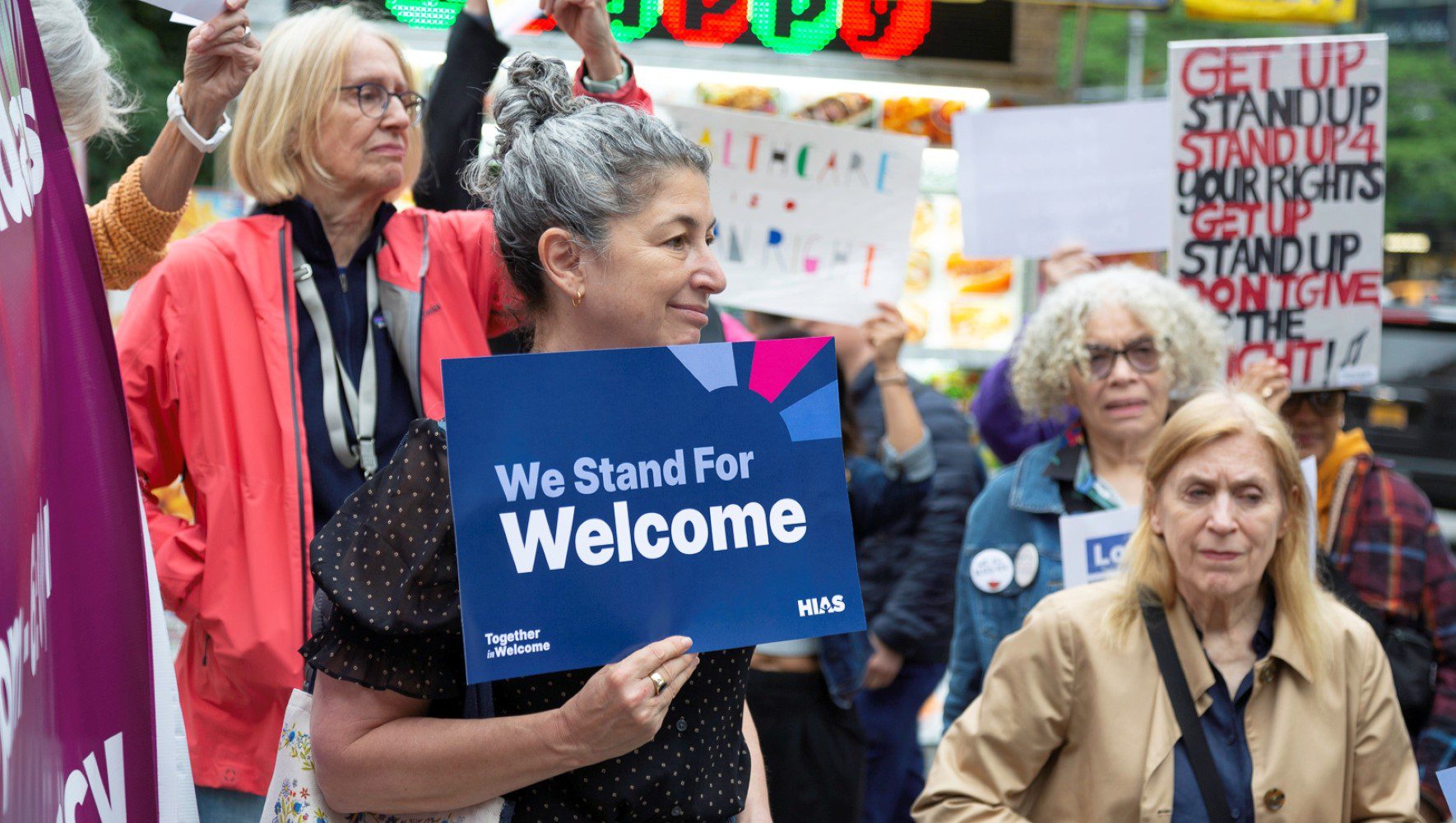DACA: What’s at Stake and How You Can Get Involved
By Meagan Hume, Guest Contributor
Jan 18, 2018
On Wednesday, January 17, dozens of Jewish American leaders and activists called on Congress to pass a clean DREAM Act to protect over 800,000 immigrants who came to the United States as children. 86 activists and rabbis were arrested by Capitol Police.
The powerful demonstration, which was organized by several Jewish organizations and co-sponsored by HIAS, follows President Trump’s decision last fall to end the Deferred Action for Childhood Arrivals (DACA) program despite record high public support for a pathway to citizenship.
"What Jewish leaders did today has great historical context. They suffered through great systematic oppression across generations - and they stood with us today."#DreamActNow pic.twitter.com/lYcbUPGm9F
— United We Dream (#DreamActNow: 478-488-8059) (@UNITEDWEDREAM) January 18, 2018
Even with the federal court ruling earlier this month temporarily reversing the Trump Administration’s cruel action, ensuring the permanent legal statuses of Dreamers will require Congressional action.
Congress is in active negotiations this week to enact new legislation to do just that, so it is as critical as ever to know what’s at stake in this fight and how you can get involved. Together, we must protect these young men and women who are American in every way except their paperwork.
The Basics
First introduced to Congress in 2001, The Development, Relief, and Education for Alien Minors (DREAM) Act was created to offer a pathway to citizenship for children brought to the U.S. without documentation. These kids and young adults became known as Dreamers. The legislation stalled for years and ultimately failed to pass in 2010, despite widespread public support.
As a temporary solution, and in response to the legislative logjam, the Obama Administration created a new program through executive order in June 2012. The Deferred Action for Childhood Arrivals (DACA) program allowed Dreamers to come forward and pass a background check. After that, on a two-year renewable basis, they could apply for work permits, college admission, and drivers licenses. It did not provide a pathway to citizenship, but critically, it allowed Dreamers to live safely in the U.S. without fear of deportation.
Who Are The Dreamers?
While the majority of individuals protected by DACA are from Mexico and Central America, countries in Asia, Europe, or the Caribbean represent seven of the top 24 nations of origin for this population. Most Dreamers arrived to the United States around the age of six, and most reside in California, Texas, Illinois, New York, and Florida — but Dreamers are vital members of communities across the country. Nearly all have been educated in the American school system.
They are now between 15 and 36 years-old and DACA is what enables these individuals—our neighbors, colleagues, and classmates—to come out of the shadows.
After DACA was implemented by the Obama Administration, 92% of Dreamers in school were able to access more educational opportunities and those working saw an average increase in their pay of 45%. Though economic impact should not be a justification for respecting the human dignity of people who call the U.S. their home, the revocation of DACA will result in a loss of an estimated $460.3 billion from gross domestic product over the next decade and remove 685,000 people from the workforce.
For perspective, that’s the loss of workforce roughly equivalent to the population of the entire city of Boston.
The Dreamers are people like Ebba, a 28 year-old student in the Northeast. Ebba’s enrollment in DACA allowed her to pursue higher education, but without any certainty in the fate of the program, she is at a professional crossroads.
Ebba says, “My DACA will expire in 2019. How will it impact my life? That is a difficult question. I have no idea. I did quite well in law school and my doctoral program, and I received an offer to become a professor at a [great] university. This is my dream job. I don’t know what will happen in 2019. I hope I can continue to teach as a professor and to research to contribute to the betterment of the human condition. I am so tired to be an immigrant under the new administration. At this point, I am not hopeful at all.”
What’s Happening Now?
Following the Trump Administration’s announcement in September 2017, no new DACA applications have been accepted and only a very limited number of application have been renewed. Of the 154,000 individuals eligible to apply between September 2017 and October 2017, 26,000 Dreamers did not receive a renewal, because they couldn’t afford the renewal fee ($495), were unaware of the deadline, or their applications arrived late as a result of the U.S. Postal Service’s failure. Following the positive court ruling on January 9, 2018, the program will allow for renewal for not only these 26,000 Dreamers but hundreds of thousands of others.
However, the court ruling is not a permanent solution: it does not open DACA to new applicants; the Administration has indicated they will appeal; and while applications are being processed, the necessary systems for renewal applications are currently non-existent.
The court case could potentially go on for years and Dreamers are losing status at the rate of 851 a week, meaning approximately 16,425 people are vulnerable to deportation at the time of publishing. If Congress does not find a legislative solution by March 5, 2018, they will become vulnerable to deportation at the rate of 1,000 a day.
Activists, including the protesters who gathered in the main rotunda of the Russell Senate Office Building this week, asking Congress for a “clean” DREAM Act, meaning a stand alone bill not tied to any other Administration immigration priorities, such as funding for a border wall. That is looking less and less likely, with hints that any bipartisan bill would create a pathway for citizenship for those with DACA, but would also include: a border wall; eliminate the diversity visa lottery program; and limit family-based migration.
While the debate is rife with uncertainty, one thing is clear: without Congressional action, those protected and affected by DACA will continue to live in fear.
Take Action
The prospect of deportation—a possible death sentence for Dreamers who are American in almost every way—is unnecessary and cruel. Eight out of ten Americans support legislation that keeps Dreamers in America. Click here to locate the phone number for your representatives, and let them know that like the vast majority of Americans, you support a clean DREAM Act.
Help your friends and family members call their representatives, too. Look for opportunities to engage on social media and spread the word to your congregation.
800,000 lives hang in the balance. Take action today.
Meagan Hume is HIAS' Associate for Policy and Advocacy. For more on DACA and Dreamers by HIAS, click here.


